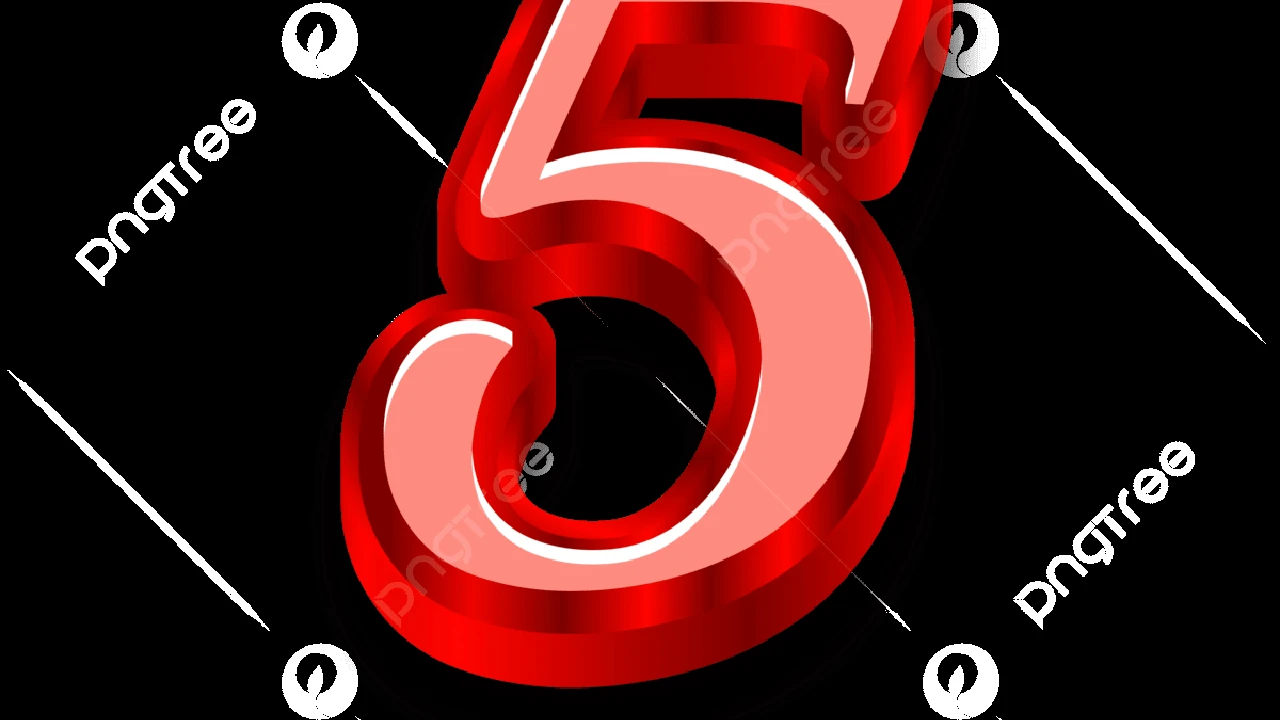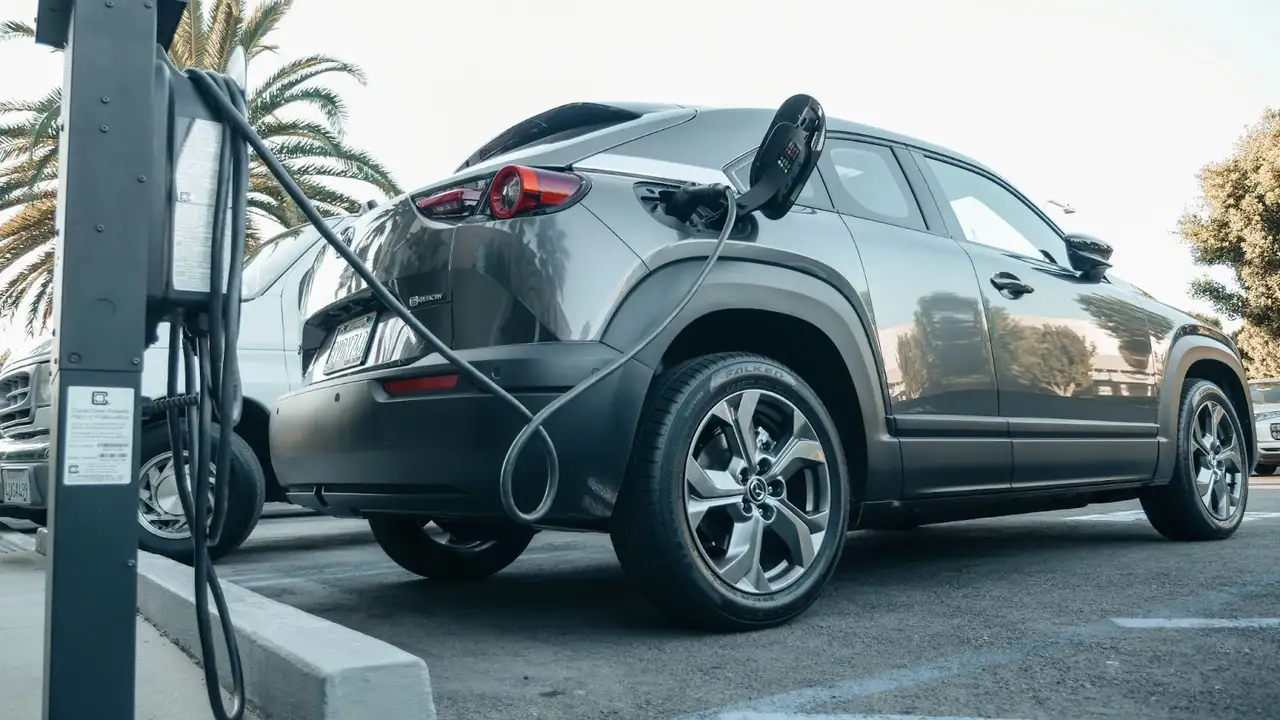
Experience stunning visuals with smart TVs offering the best picture quality. Compare OLED, QLED, and Mini-LED technologies. Choosing a new smart TV can be a bit overwhelming, right? There are so many options out there, and everyone's talking about different display technologies like OLED, QLED, and Mini-LED. But what do these terms actually mean for your viewing experience? And more importantly, which one is going to give you the absolute best picture quality for your hard-earned cash? Let's dive deep into the world of smart TVs and figure out what makes a picture truly pop.
Understanding Display Technologies OLED QLED Mini-LED Explained
Before we get into specific recommendations, it's super important to understand the core technologies that power today's best smart TVs. Each one has its own strengths and weaknesses, and knowing these will help you make an informed decision.
OLED Organic Light Emitting Diode Technology
OLED stands for Organic Light Emitting Diode. This technology is often considered the gold standard for picture quality, and for good reason. Unlike traditional LED TVs, OLED panels don't require a backlight. Instead, each individual pixel generates its own light. This means that when a pixel needs to be black, it can simply turn off completely. The result? Perfect blacks, infinite contrast, and incredibly vibrant colors. You'll notice details in dark scenes that you've never seen before, and colors will look incredibly lifelike.
Pros of OLED:
- Perfect Blacks: Unmatched contrast ratio.
- Infinite Contrast: Because pixels can turn off individually.
- Wide Viewing Angles: Picture quality remains consistent even when viewed from the side.
- Fast Response Times: Great for gaming and fast-paced action.
- Vibrant Colors: Excellent color accuracy and saturation.
Cons of OLED:
- Lower Peak Brightness: Generally not as bright as QLED or Mini-LED, which can be a factor in very bright rooms.
- Potential for Burn-in: While much less common now, static images displayed for very long periods can theoretically cause burn-in (though modern OLEDs have protections).
- Higher Price Point: Often more expensive than other technologies, especially at larger sizes.
QLED Quantum Dot LED Technology
QLED, primarily championed by Samsung, stands for Quantum Dot LED. It's an evolution of traditional LED LCD technology. QLED TVs still use a backlight, but they incorporate a layer of quantum dots. These tiny nanocrystals enhance color and brightness. Quantum dots are able to produce more precise and vibrant colors, and they significantly boost the TV's peak brightness. This makes QLED TVs excellent for bright rooms and for displaying HDR (High Dynamic Range) content, which benefits greatly from high brightness levels.
Pros of QLED:
- High Peak Brightness: Excellent for bright rooms and HDR content.
- Vibrant Colors: Quantum dots enhance color volume and accuracy.
- No Burn-in Risk: As they use a backlight, there's no risk of permanent image retention.
- More Affordable at Larger Sizes: Often more cost-effective than OLED for very large screens.
Cons of QLED:
- Black Levels Not as Perfect as OLED: Still rely on a backlight, so blacks aren't truly absolute.
- Viewing Angles Can Be Limited: Picture quality can degrade when viewed from extreme angles.
- Blooming/Halos: Can sometimes exhibit light blooming around bright objects on a dark background due to the backlight zones.
Mini-LED Backlight Technology
Mini-LED is not a new display technology itself, but rather an advancement in backlight technology for LCD TVs (which includes QLED). Instead of using larger LEDs for the backlight, Mini-LED TVs use thousands of tiny LEDs, often tens of thousands, to create many more local dimming zones. This allows for much more precise control over brightness and contrast, significantly improving black levels and reducing blooming compared to standard LED or even older QLED TVs. It's essentially a bridge between the perfect blacks of OLED and the high brightness of QLED.
Pros of Mini-LED:
- Improved Black Levels: Many more dimming zones lead to deeper blacks than standard LED/QLED.
- High Peak Brightness: Combines the brightness of QLED with better contrast control.
- Reduced Blooming: More precise dimming zones minimize light halos.
- No Burn-in Risk: Like QLED, it's an LCD-based technology.
Cons of Mini-LED:
- Still Not Perfect Blacks: While much better, they can't achieve the absolute black of OLED.
- Can Be Expensive: Often priced similarly to or slightly below OLED, depending on the model and size.
Top Smart TVs for Unrivaled Picture Quality Product Recommendations
Alright, now that we've got the tech jargon out of the way, let's talk about some specific models that truly stand out in terms of picture quality. We'll cover options across different price points and technologies.
Best Overall Picture Quality OLED LG C3 Series
If you're looking for the absolute best all-around picture quality, especially for movies and cinematic content, the LG C3 OLED TV is consistently a top contender. It builds on LG's long-standing reputation for excellent OLED panels.
Key Features:
- Display Technology: OLED (Self-Emitting Pixels)
- Processor: α9 AI Processor Gen6
- HDR Support: Dolby Vision, HDR10, HLG
- Gaming Features: 4K @ 120Hz, VRR (Variable Refresh Rate), ALLM (Auto Low Latency Mode), G-Sync, FreeSync Premium
- Smart TV Platform: webOS 23
Why it's great: The C3 delivers those perfect blacks and infinite contrast that OLED is famous for. Colors are incredibly accurate and vibrant. It's also a fantastic choice for gamers, with four HDMI 2.1 ports supporting 4K at 120Hz, VRR, and ALLM. The webOS smart platform is intuitive and fast. It's bright enough for most living rooms, though it might struggle a bit in extremely sunny environments compared to a high-end QLED.
Ideal Usage Scenario: Perfect for dedicated home theater setups, movie buffs, and serious gamers who prioritize deep blacks and stunning contrast. Great for rooms with controlled lighting.
Estimated Price Range:
- 55-inch: $1,400 - $1,600 USD
- 65-inch: $1,800 - $2,200 USD
- 77-inch: $2,800 - $3,500 USD
Best for Bright Rooms and HDR QLED Samsung S95C OLED
Wait, an OLED from Samsung? Yes! Samsung has entered the OLED game with their QD-OLED technology, which combines the self-emissive pixels of OLED with the quantum dot color enhancement of QLED. The Samsung S95C OLED is their flagship QD-OLED and it's incredibly impressive.
Key Features:
- Display Technology: QD-OLED (Quantum Dot OLED)
- Processor: Neural Quantum Processor 4K
- HDR Support: HDR10+, HDR10, HLG (No Dolby Vision)
- Gaming Features: 4K @ 144Hz, VRR, ALLM, FreeSync Premium Pro
- Smart TV Platform: Tizen OS
Why it's great: The S95C offers the perfect blacks of OLED but with significantly higher peak brightness and even more vibrant colors, thanks to the quantum dot layer. This makes it an excellent choice for bright rooms where OLEDs traditionally struggle, and it makes HDR content truly pop. It's also a beast for gaming with 144Hz support. The One Connect Box helps with cable management, keeping your setup clean.
Ideal Usage Scenario: Excellent for living rooms with lots of natural light, users who watch a lot of HDR content, and gamers who want the best of both worlds: OLED blacks and QLED brightness.
Estimated Price Range:
- 55-inch: $1,800 - $2,000 USD
- 65-inch: $2,500 - $2,800 USD
- 77-inch: $3,800 - $4,500 USD
Best Mini-LED Value TCL QM8 Series
If you want fantastic picture quality without breaking the bank, especially if you're looking for a larger screen, the TCL QM8 Mini-LED TV is an outstanding value. TCL has been pushing the boundaries of Mini-LED technology, offering impressive performance at competitive prices.
Key Features:
- Display Technology: Mini-LED with Quantum Dot (QLED)
- Processor: AiPQ Engine Gen 3
- HDR Support: Dolby Vision IQ, HDR10+, HDR10, HLG
- Gaming Features: 4K @ 120Hz (up to 144Hz VRR), VRR, ALLM, FreeSync Premium Pro
- Smart TV Platform: Google TV
Why it's great: The QM8 delivers incredibly high peak brightness, making it fantastic for HDR content and bright rooms. The Mini-LED backlight with thousands of local dimming zones provides excellent contrast and surprisingly deep blacks for an LCD-based TV, significantly reducing blooming. It's also a strong performer for gaming and runs on the user-friendly Google TV platform.
Ideal Usage Scenario: Great for budget-conscious buyers who want a large screen with excellent brightness and contrast, especially for sports, bright movies, and gaming in well-lit rooms.
Estimated Price Range:
- 65-inch: $1,000 - $1,200 USD
- 75-inch: $1,500 - $1,800 USD
- 85-inch: $2,000 - $2,500 USD
Premium Mini-LED Performance Sony Bravia XR X95L
For those who appreciate Sony's renowned picture processing and sound quality, the Sony Bravia XR X95L Mini-LED TV is a top-tier choice. Sony's XR Processor is known for its ability to enhance content, making everything look incredibly natural and detailed.
Key Features:
- Display Technology: Mini-LED with XR Backlight Master Drive
- Processor: Cognitive Processor XR
- HDR Support: Dolby Vision, HDR10, HLG
- Gaming Features: 4K @ 120Hz, VRR, ALLM (PS5 Perfect for PlayStation features)
- Smart TV Platform: Google TV
Why it's great: The X95L combines the high brightness of Mini-LED with Sony's exceptional picture processing. This results in incredibly detailed images, natural colors, and excellent motion handling. The XR Backlight Master Drive provides precise local dimming, leading to deep blacks and minimal blooming. Sony's Acoustic Multi-Audio also means the sound quality is often superior to competitors. It's also 'Perfect for PlayStation 5' with exclusive features.
Ideal Usage Scenario: Perfect for users who value natural, accurate picture quality, superior upscaling of lower-resolution content, and excellent built-in sound. Great for movies, sports, and gaming, especially if you own a PS5.
Estimated Price Range:
- 65-inch: $2,000 - $2,500 USD
- 75-inch: $2,800 - $3,500 USD
- 85-inch: $3,800 - $4,500 USD
Choosing the Right Smart TV for Your Viewing Habits and Environment
So, how do you pick the perfect TV from these fantastic options? It really comes down to your specific needs, viewing environment, and budget. Let's break down some common scenarios.
For the Movie Enthusiast and Cinephile
If you love watching movies in a dark or dimly lit room, and you prioritize perfect blacks, infinite contrast, and cinematic color accuracy, an OLED TV like the LG C3 is probably your best bet. The way OLED handles shadows and highlights in dark scenes is simply unmatched, creating an incredibly immersive experience. You'll see every detail the director intended.
For Bright Living Rooms and Sports Fans
If your TV is in a bright living room with lots of windows, or if you primarily watch sports and bright, colorful content, a high-brightness QLED or Mini-LED TV like the Samsung S95C or TCL QM8 will shine. Their ability to combat glare and deliver punchy, vibrant images in well-lit environments is a huge advantage. Sports broadcasts, especially, benefit from the extra brightness and color volume.
For the Avid Gamer Console and PC Gaming
Gamers need low input lag, fast response times, and support for features like VRR (Variable Refresh Rate) and ALLM (Auto Low Latency Mode). Both OLEDs (LG C3, Samsung S95C) and high-end Mini-LEDs (TCL QM8, Sony X95L) offer excellent gaming performance. OLEDs have near-instantaneous response times, which means no motion blur. QD-OLEDs like the S95C offer even higher refresh rates (144Hz) for PC gamers. Make sure the TV has HDMI 2.1 ports if you have a current-gen console like a PS5 or Xbox Series X.
For Mixed Usage and Value Seekers
If you're looking for a great all-rounder that performs well across various content types and viewing conditions, and you want good value for your money, a Mini-LED TV like the TCL QM8 is an excellent choice. It offers a significant step up in picture quality from standard LED TVs, getting closer to OLED performance in many aspects, but often at a more accessible price point, especially for larger sizes.
Considering Smart TV Platforms and User Experience
Beyond picture quality, the smart TV platform is crucial for your daily experience. Most modern smart TVs offer access to all major streaming apps (Netflix, Hulu, Disney+, etc.).
- LG's webOS: Known for its intuitive Magic Remote and clean interface.
- Samsung's Tizen OS: Fast, feature-rich, and integrates well with Samsung's ecosystem.
- Google TV (Sony, TCL): Offers a vast app library, excellent voice control with Google Assistant, and personalized content recommendations.
Consider which platform feels most comfortable and offers the features you'll use most often.
Picture Settings Calibration and Optimizing Your Viewing Experience
Once you've got your new TV, don't just plug it in and go! A little bit of tweaking can make a huge difference in picture quality. Most TVs come with default settings that are often too bright or oversaturated to stand out in a brightly lit showroom. Here are some quick tips:
Choose the Right Picture Mode
Avoid 'Vivid' or 'Dynamic' modes. For the most accurate picture, especially for movies, switch to 'Cinema', 'Movie', 'Filmmaker Mode', or 'Standard'. These modes are designed to display content as the creators intended.
Adjust Brightness and Contrast
Brightness controls the black levels, and contrast controls the white levels. Adjust these so that you can see details in both the darkest and brightest parts of the image without crushing blacks or blowing out whites. There are many online guides and test patterns that can help with this.
Tweak Color and Tint
While 'Movie' or 'Cinema' modes usually have accurate color settings, you can fine-tune them if needed. Avoid oversaturating colors; natural is usually best.
Turn Off Motion Smoothing
This is often called 'Motion Interpolation', 'TruMotion', 'MotionFlow', or similar. While it can make sports look smoother, it often creates a 'soap opera effect' for movies and TV shows, making them look unnatural. Most cinephiles prefer to turn this off.
Enable HDR and Dolby Vision
Make sure your TV is set up to properly receive and display HDR (High Dynamic Range) and Dolby Vision content from your streaming devices or Blu-ray player. This usually involves enabling 'Enhanced HDMI' or 'Deep Color' settings on the HDMI input your device is connected to.
The Future of TV Technology MicroLED and Beyond
The world of display technology is constantly evolving. While OLED, QLED, and Mini-LED are dominant now, what's next? MicroLED is a technology that promises to combine the best of both worlds: the self-emissive pixels of OLED (meaning perfect blacks) with the incredible brightness and longevity of traditional inorganic LEDs. Imagine a TV with OLED's contrast but QLED's brightness and no burn-in risk. Sounds amazing, right?
Currently, MicroLED TVs are extremely expensive and primarily available in very large, modular formats (think massive wall-sized displays). But as the technology matures and production scales up, we might see MicroLED become more mainstream in the coming years. It's definitely something to keep an eye on!
Other advancements include even more sophisticated AI processing for upscaling and picture enhancement, more seamless integration with smart home ecosystems, and potentially new form factors like rollable or transparent displays. The future of TV is looking incredibly exciting!
Ultimately, the best smart TV for you is one that fits your budget, your viewing habits, and your living space. Whether you go for the perfect blacks of OLED, the dazzling brightness of QLED, or the impressive balance of Mini-LED, you're in for a treat with today's cutting-edge display technologies. Happy viewing!
:max_bytes(150000):strip_icc()/277019-baked-pork-chops-with-cream-of-mushroom-soup-DDMFS-beauty-4x3-BG-7505-5762b731cf30447d9cbbbbbf387beafa.jpg)






